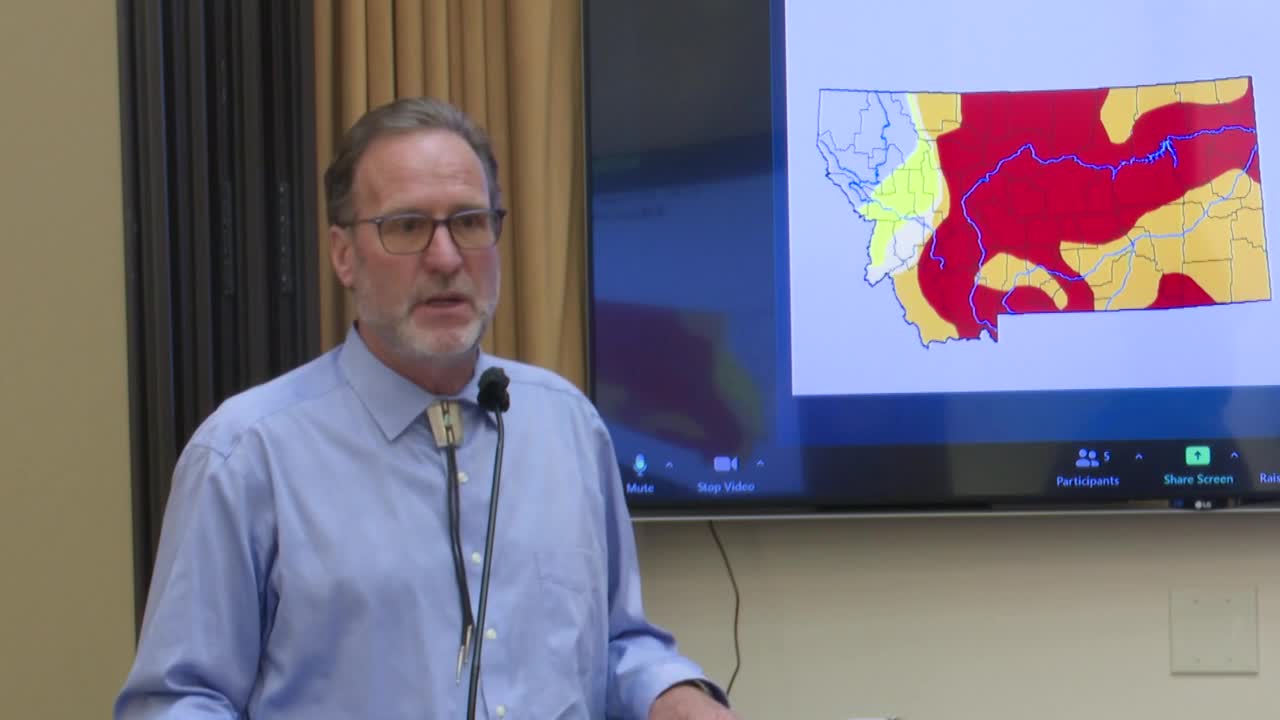HELENA - State leaders say it’s been a slow start to the fire season in Montana, but they’re preparing for it to start heating up as the state starts to dry out.
The Montana Department of Natural Resources and Conservation (DNRC) provided the state Environmental Quality Council an update on their fire season outlook and Montana’s drought conditions on Tuesday.
So far this year, DNRC has reported 682 fires across Montana, burning a total of 4,663 acres. That’s compared to 1,683 fires and more than 400,000 acres burned at the same time in 2021.
DNRC Fire Protection Bureau Chief Matt Hall said state and local firefighters have been successful so far in keeping most of the fires small. However, he said they’re seeing conditions change quickly.
“This week, we did see fire danger move from moderate to high in quite a number of counties across Montana,” he said, adding the DNRC is projecting more warm and dry weather and above-average fire activity in the coming months.
The department is now fully staffed, with 110 seasonal fire employees — including firefighters, dispatchers and aviation crews. However, Hall says they’ve had more turnover than in other years.
“We didn’t have as many returning qualifications for firefighters, so we do have a number of trainees and trainee positions this year,” he said.
This year, the Gianforte administration announced it would increase seasonal firefighters’ pay by $1.70 an hour, bringing the minimum base to $15.50 an hour. Hall believes that increase helped with recruitment and could help with retention going forward.
Montana’s state fire fund currently has just over $50 million available. Hall said the state spent $50.1 million on wildland firefighting costs. Their average annual cost over the last ten years was $26.6 million.
Hall called on the public to keep the rising fire danger in mind over the coming weeks.
“This time of the year, we’re really pushing the ‘One Less Spark’ message and preventing wildfires in Montana,” he said. “Eight out of ten wildfires are human-caused in Montana, and so we really encourage folks to be diligent when they’re working and playing across Montana.”
In a statement Tuesday afternoon, the DNRC Helena Unit called conditions “deceptively green.” They encouraged people to travel and operate equipment early in the morning or late in the day, park vehicles away from vegetation that could ignite, avoid dragging chains or other metal parts that could create sparks and always carry a fire extinguisher or shovel and extra water.
There was positive news on Montana’s drought conditions.
“I’m nearly giddy at the idea that I’m up here smiling giving this report,” said DNRC Drought Program Coordinator Michael Downey who added that in April, the department was projecting continued serious drought.
“Conditions were really as dire as we’ve seen, coming off of last year’s historically bad drought,” he said.
Instead, cool spring weather kept the snowpack in place longer, and many areas of Montana have seen multiple inches of rain since that time. The drought levels have improved across much of the state — although the situation has worsened in north-central Montana.
John Brenden, an Environmental Quality Council member from Scobey, echoed the concerns about north-central Montana and said many growers have also been hit hard by hail.
“When you cross Marias Pass, you get a green garden, but when you go from Havre down to Helena, it’s the poorest crop I’ve seen in a long time,” he said.




